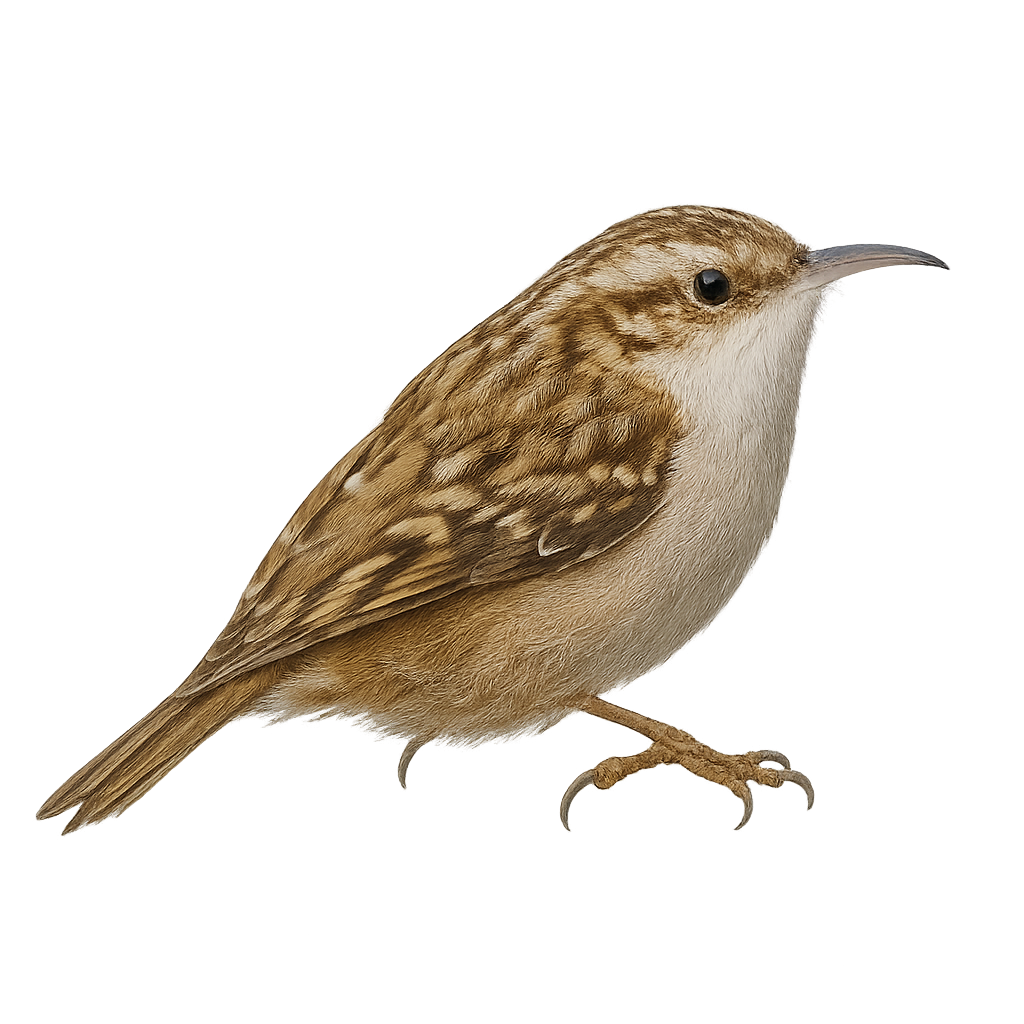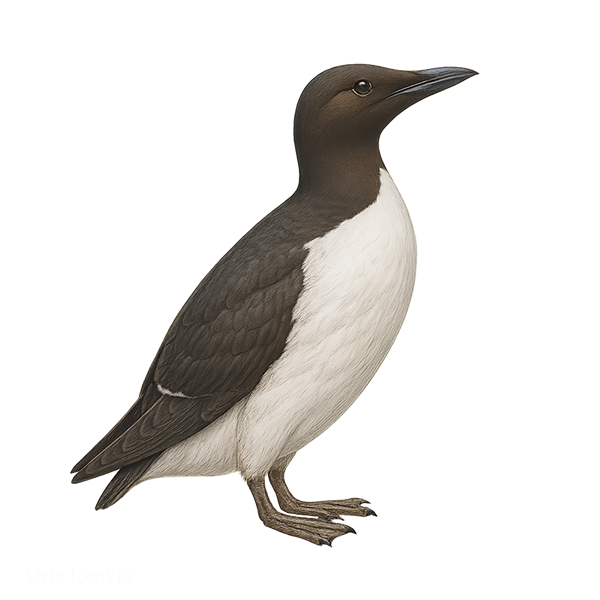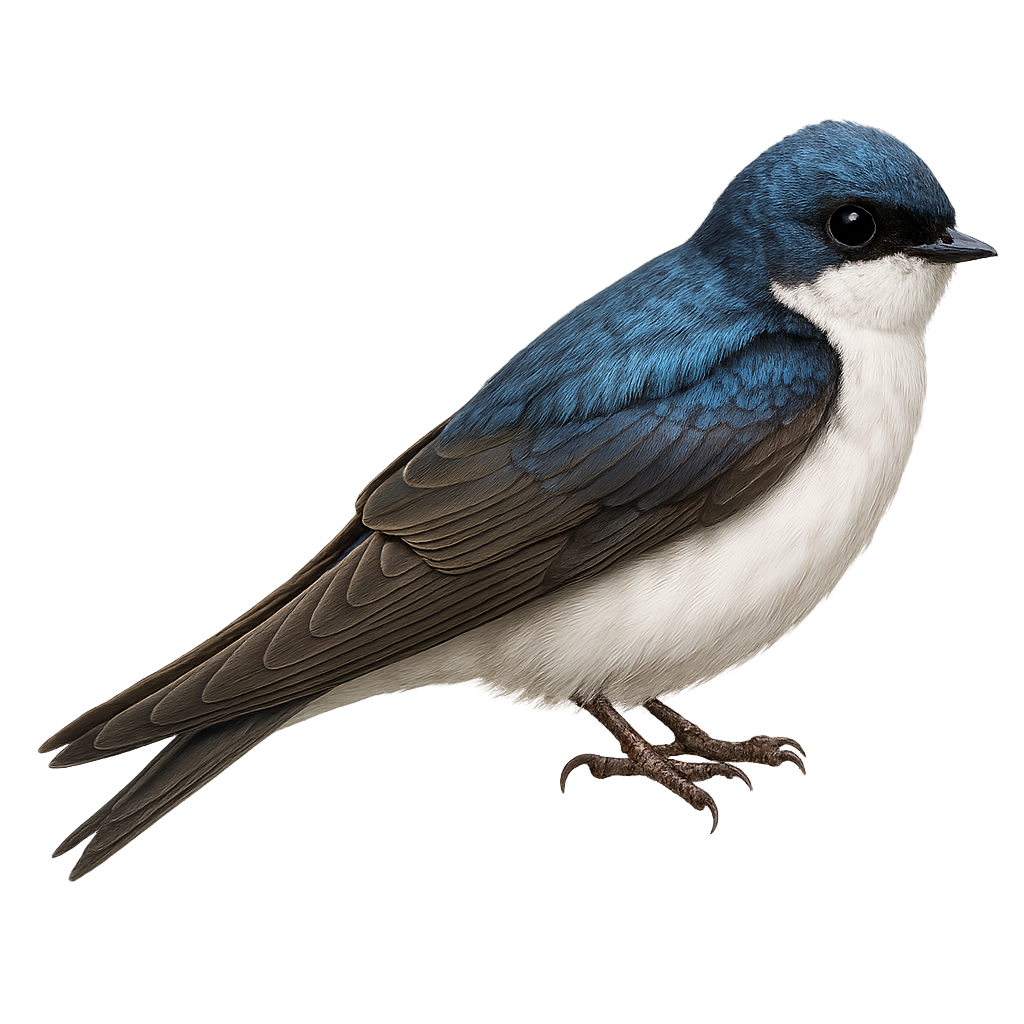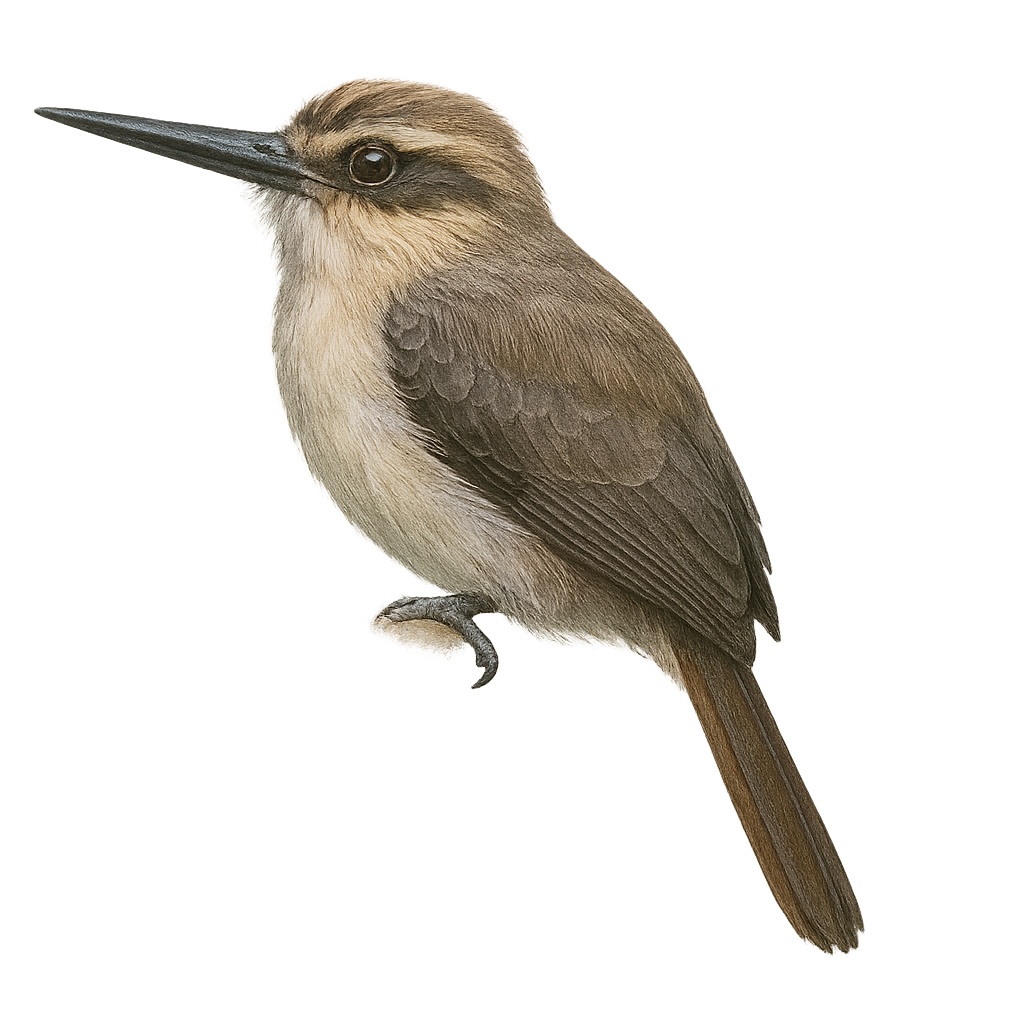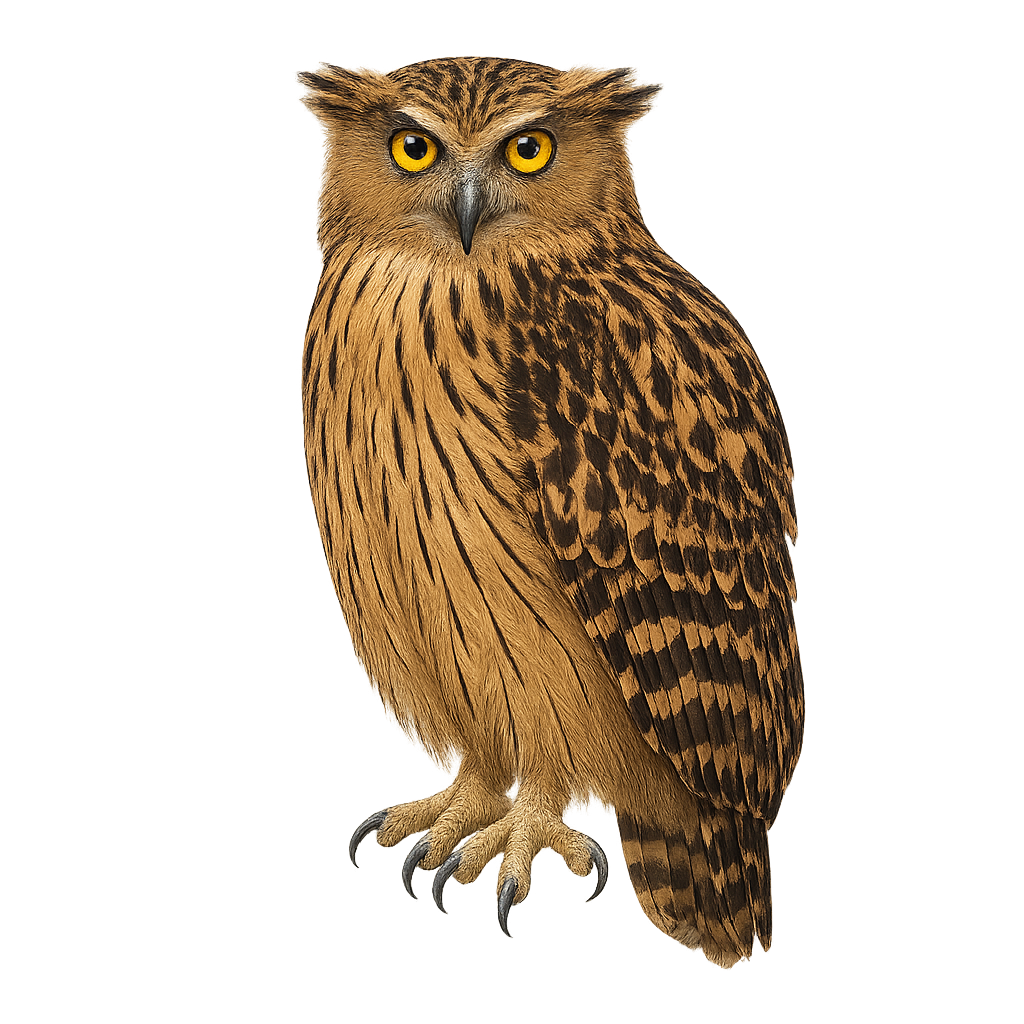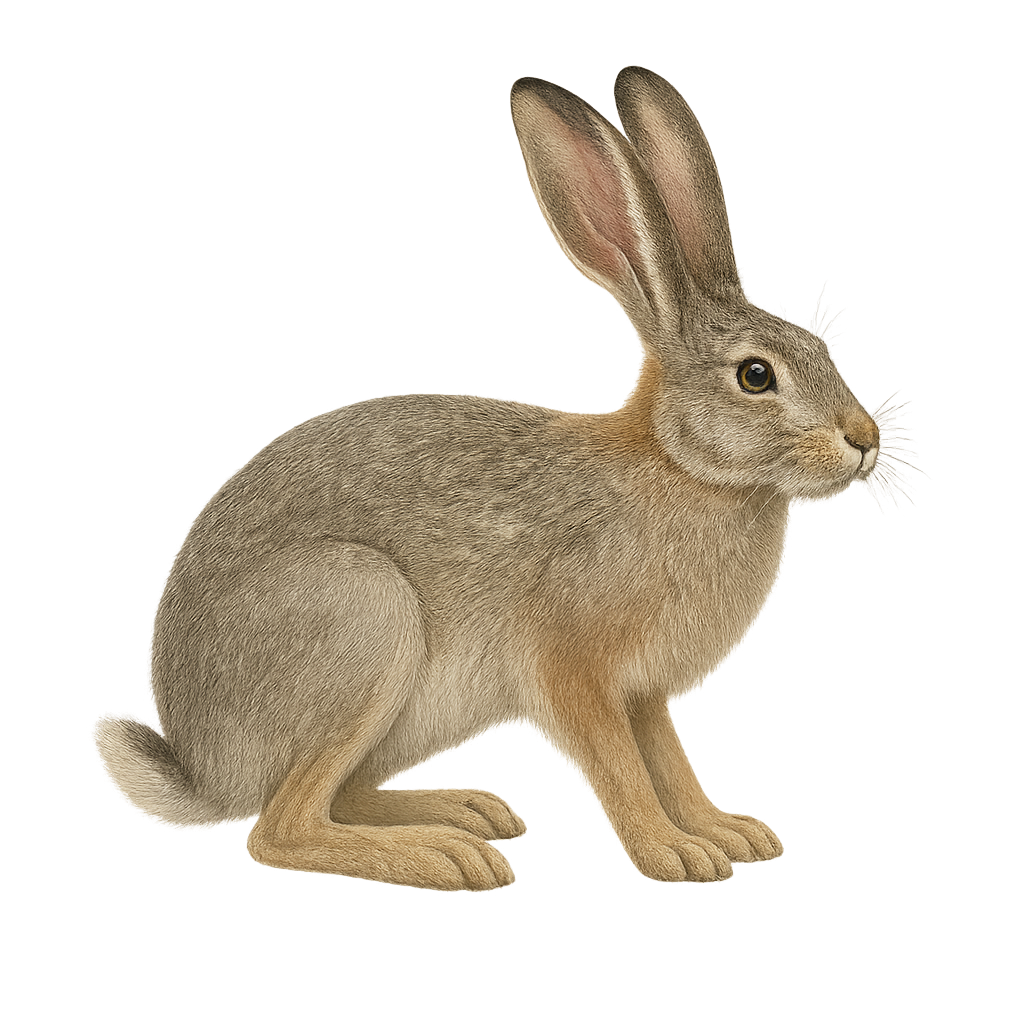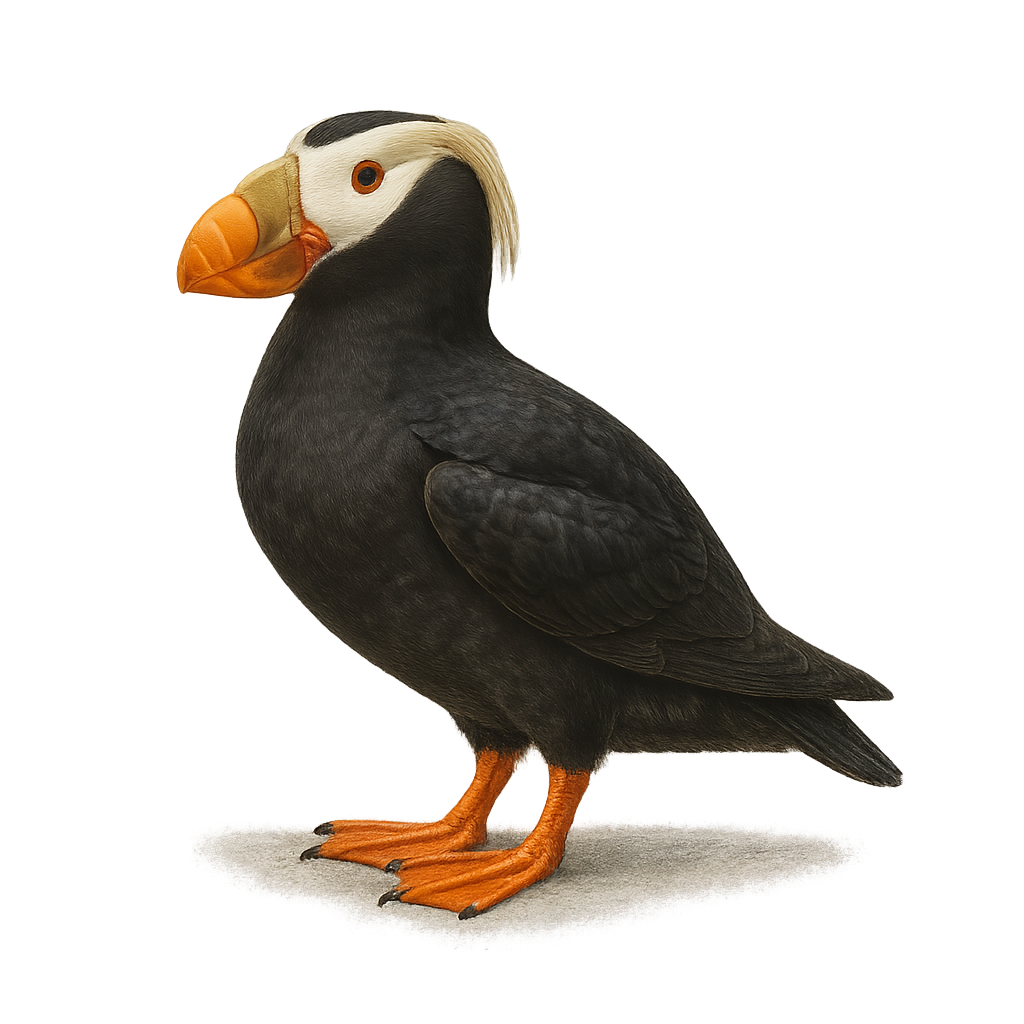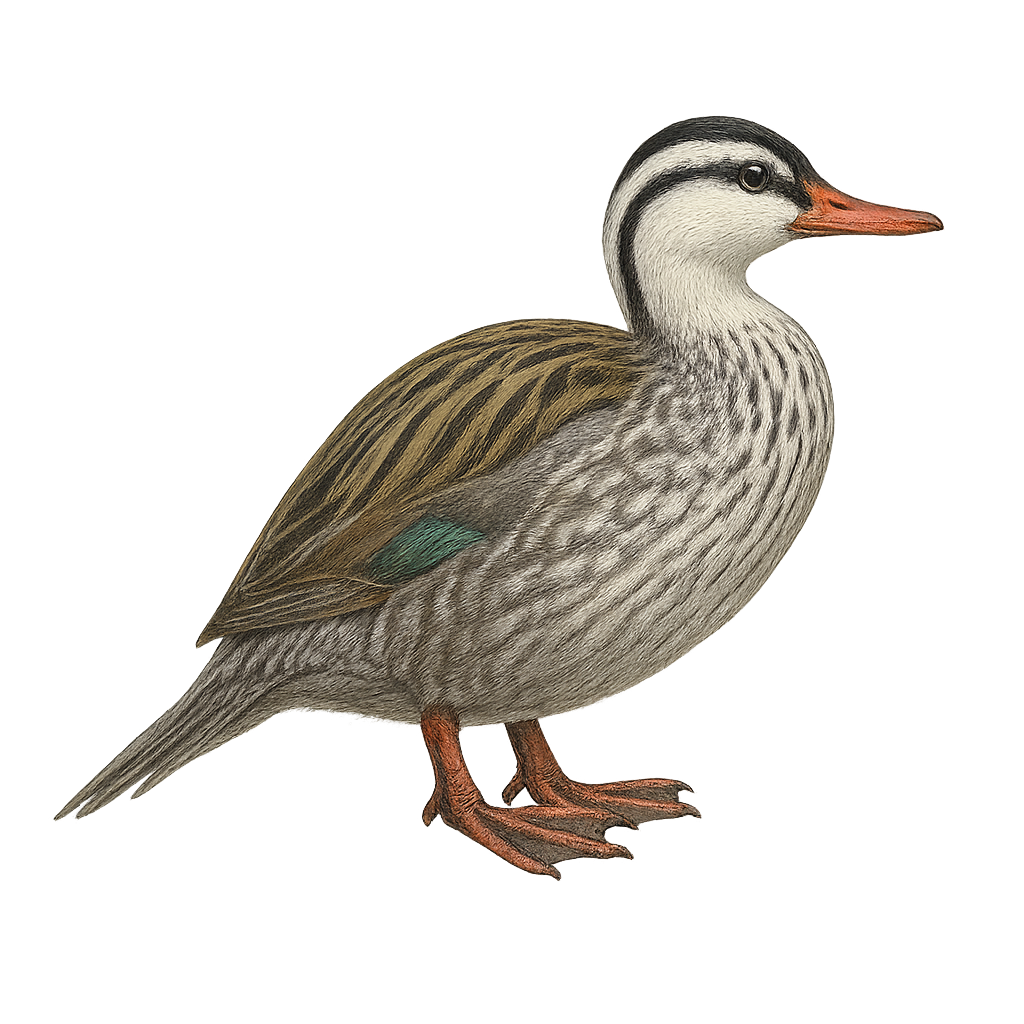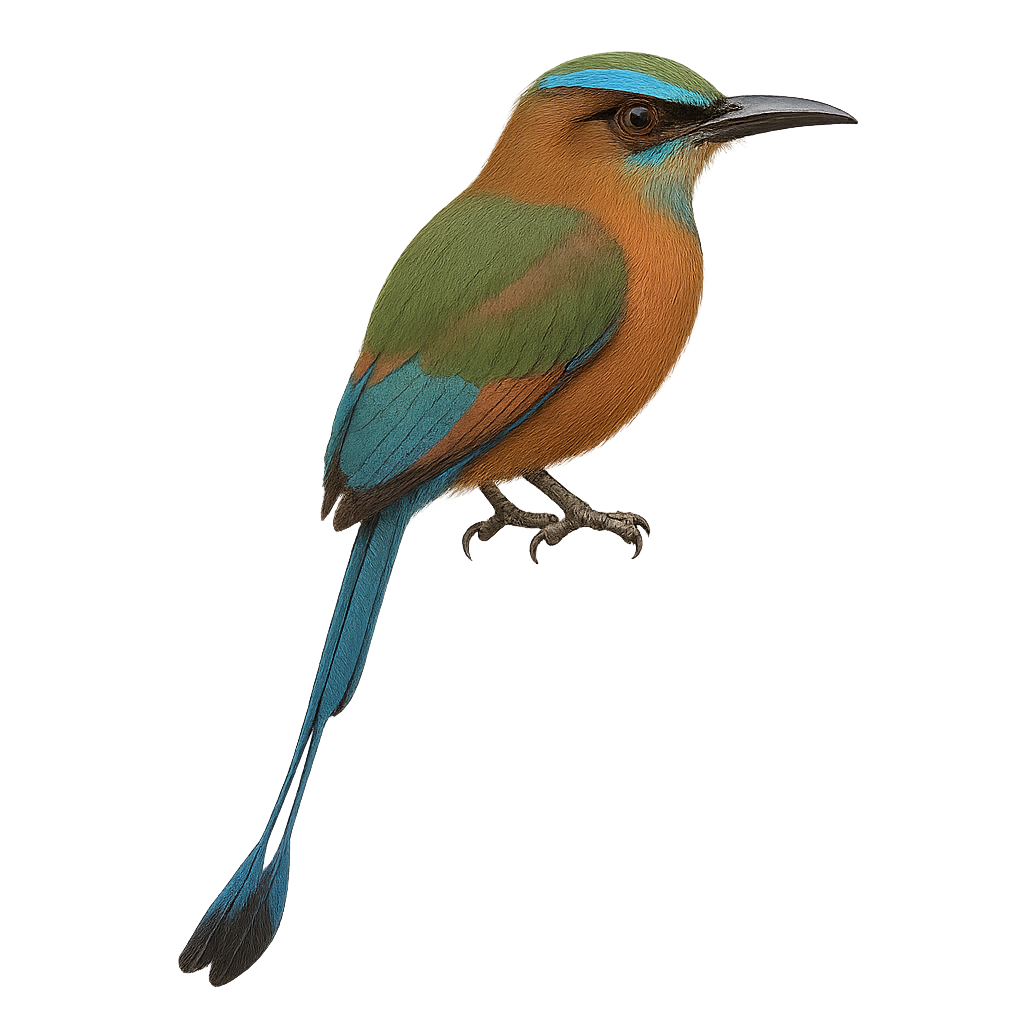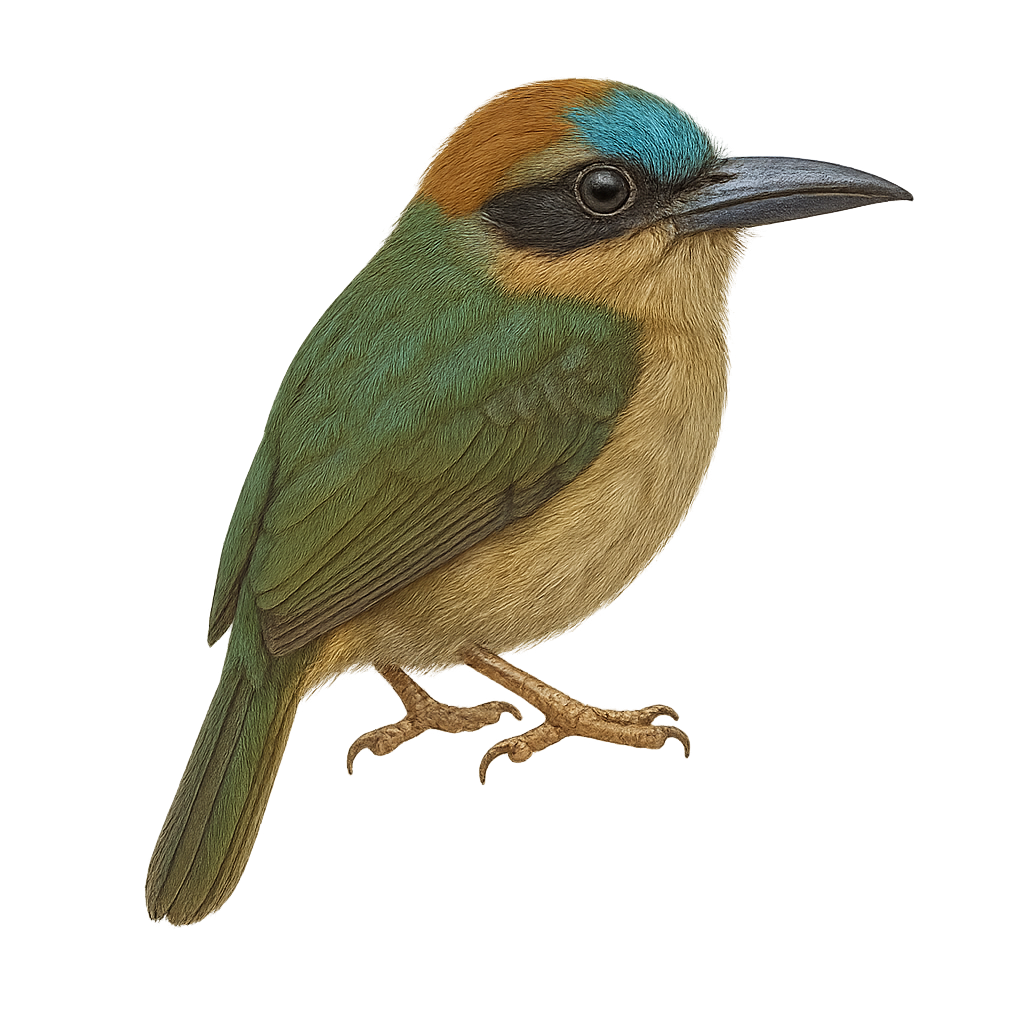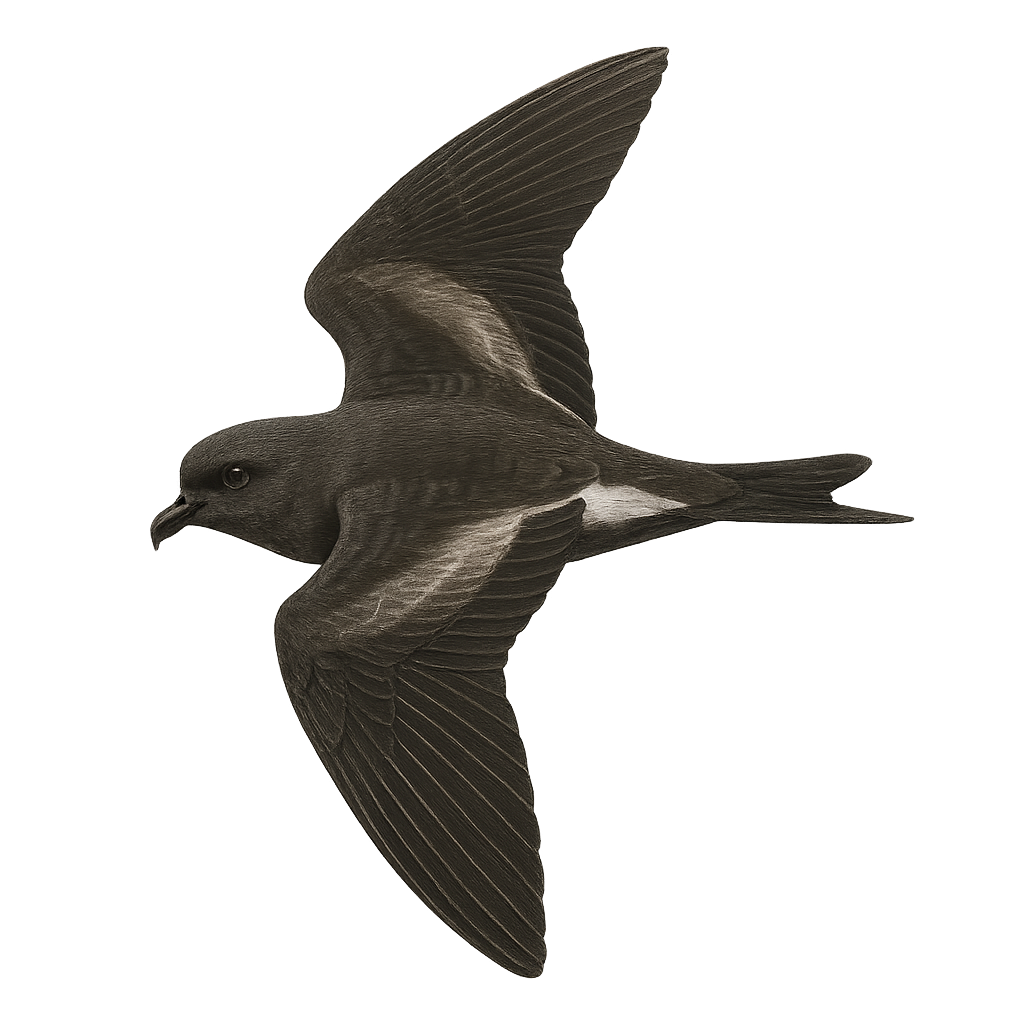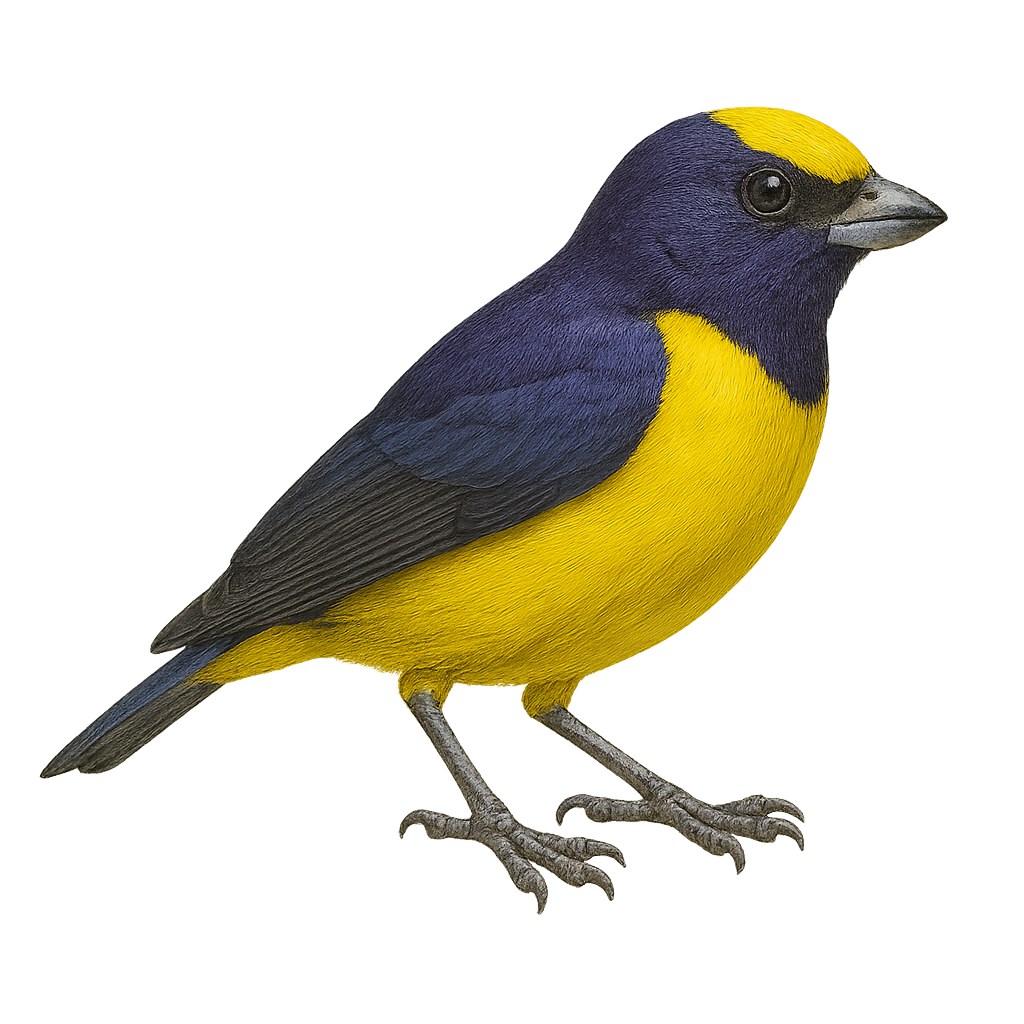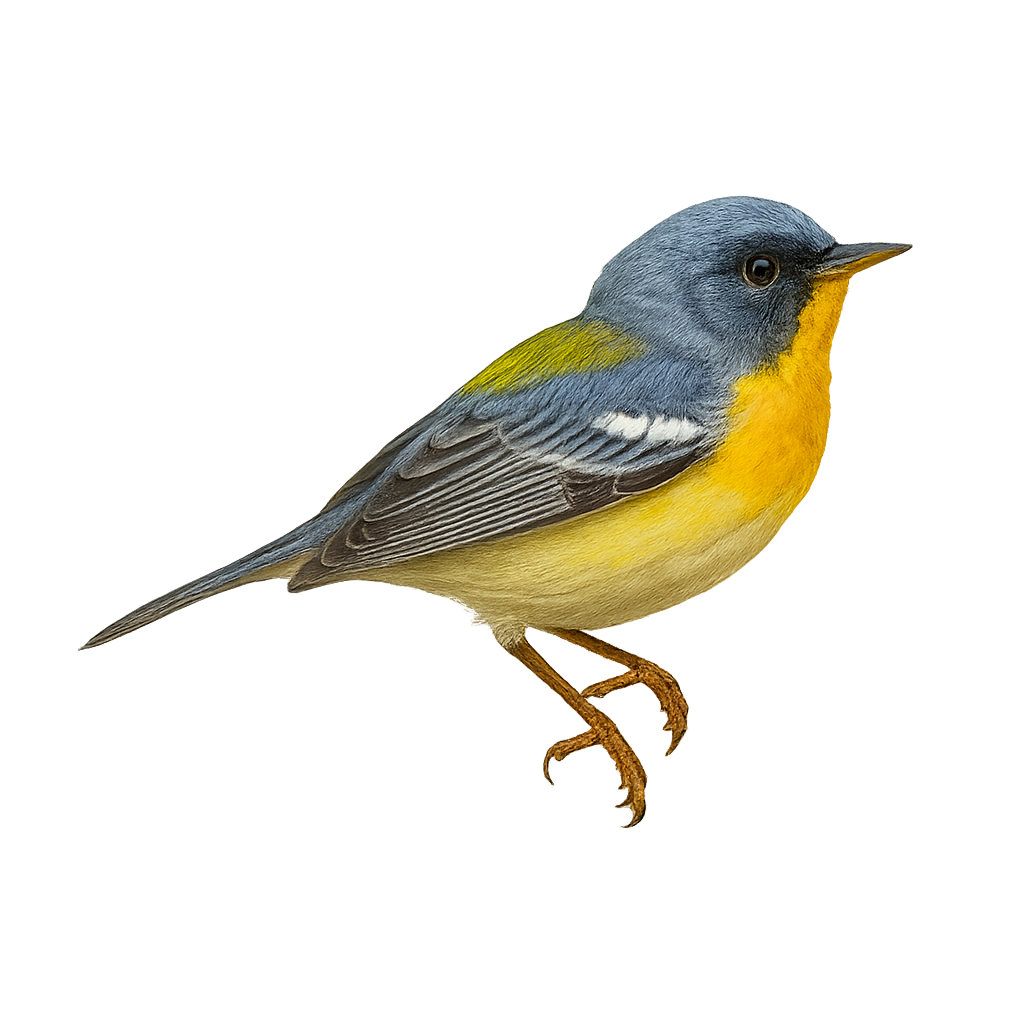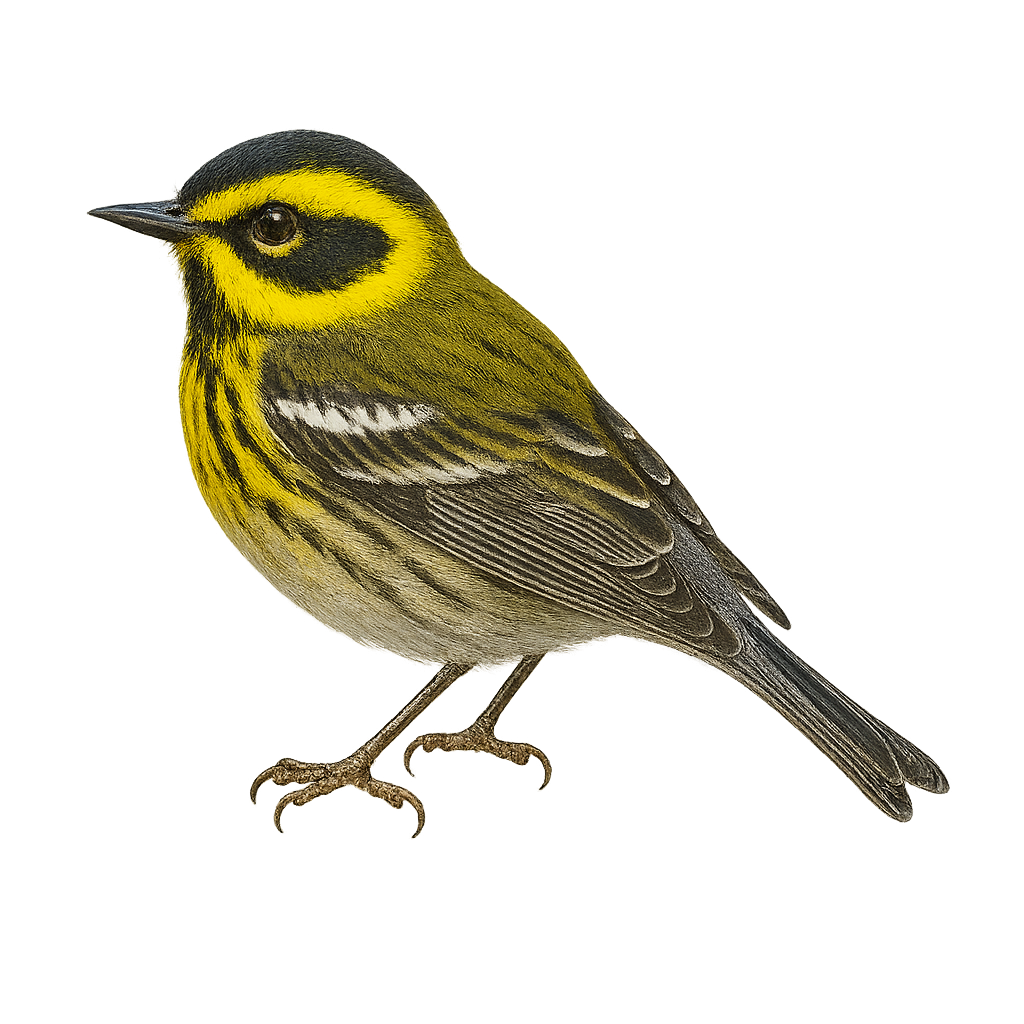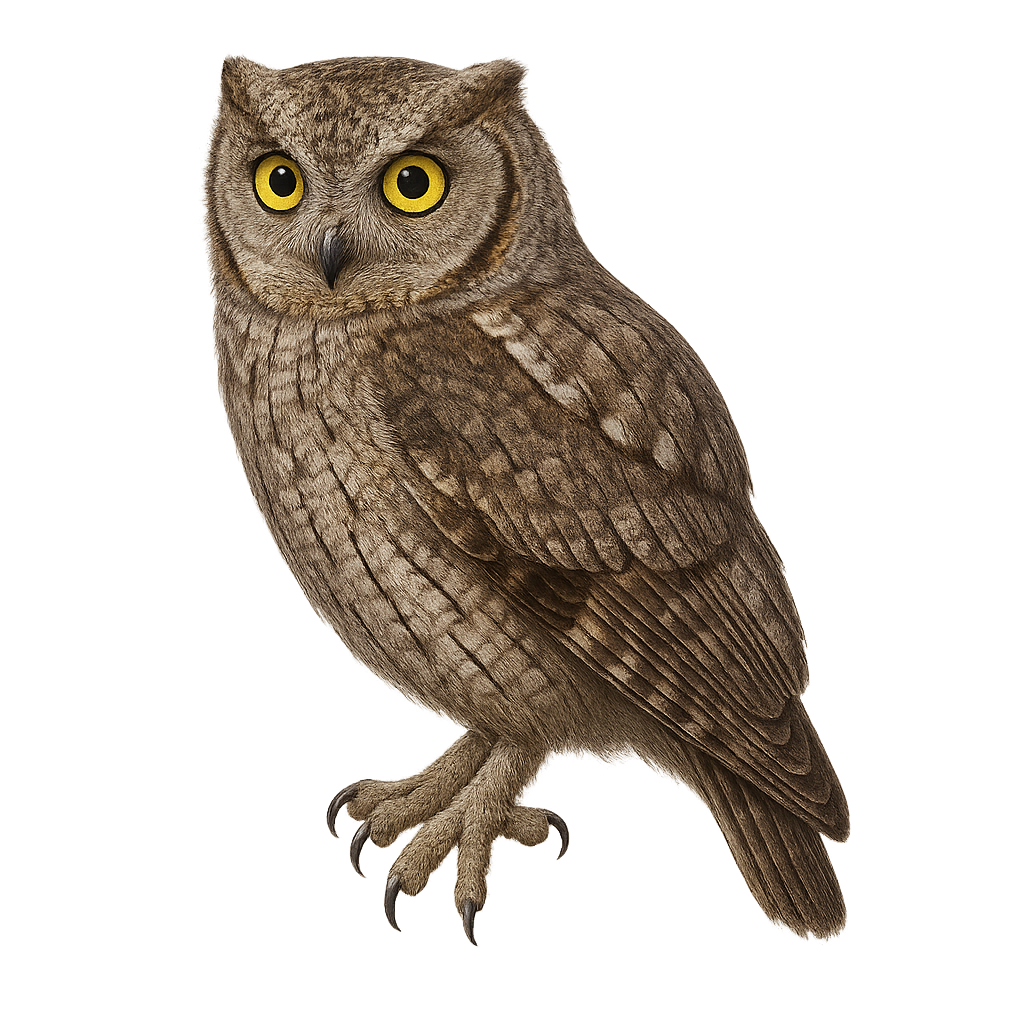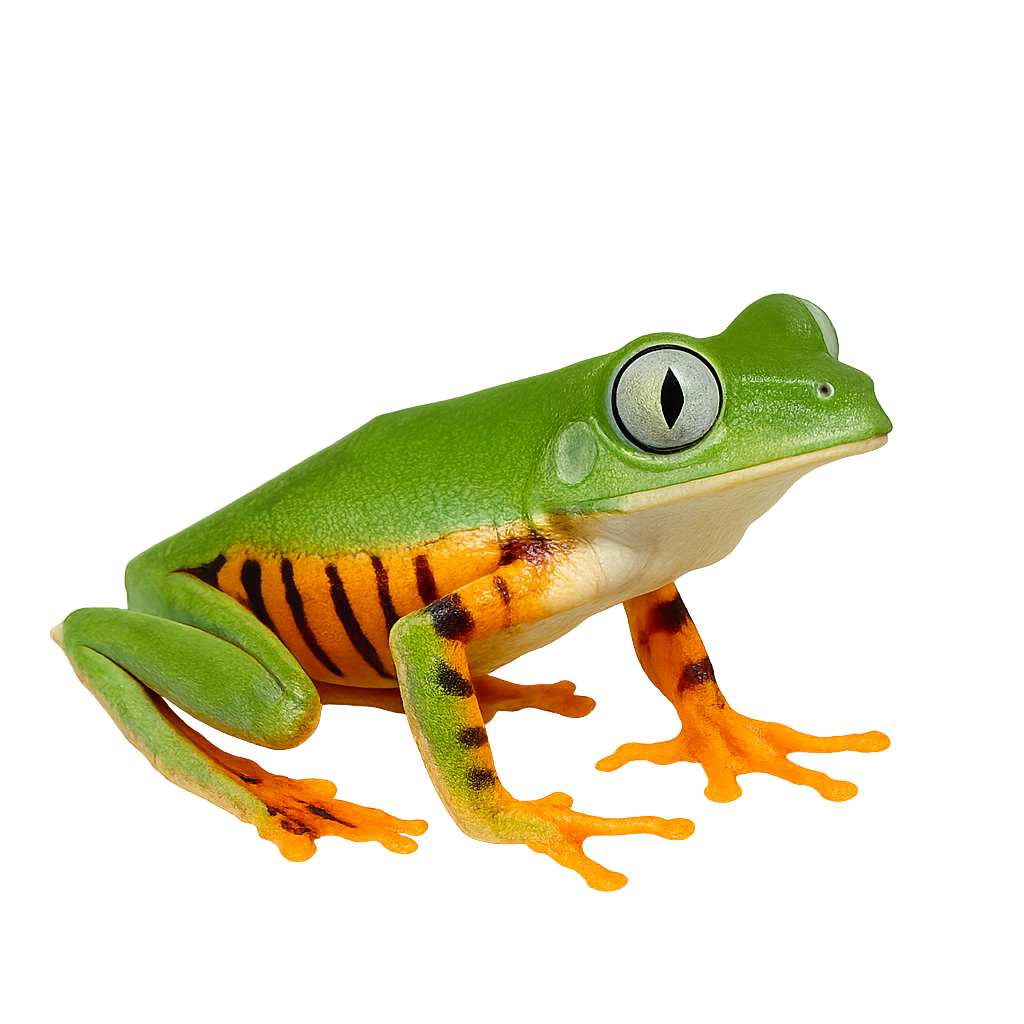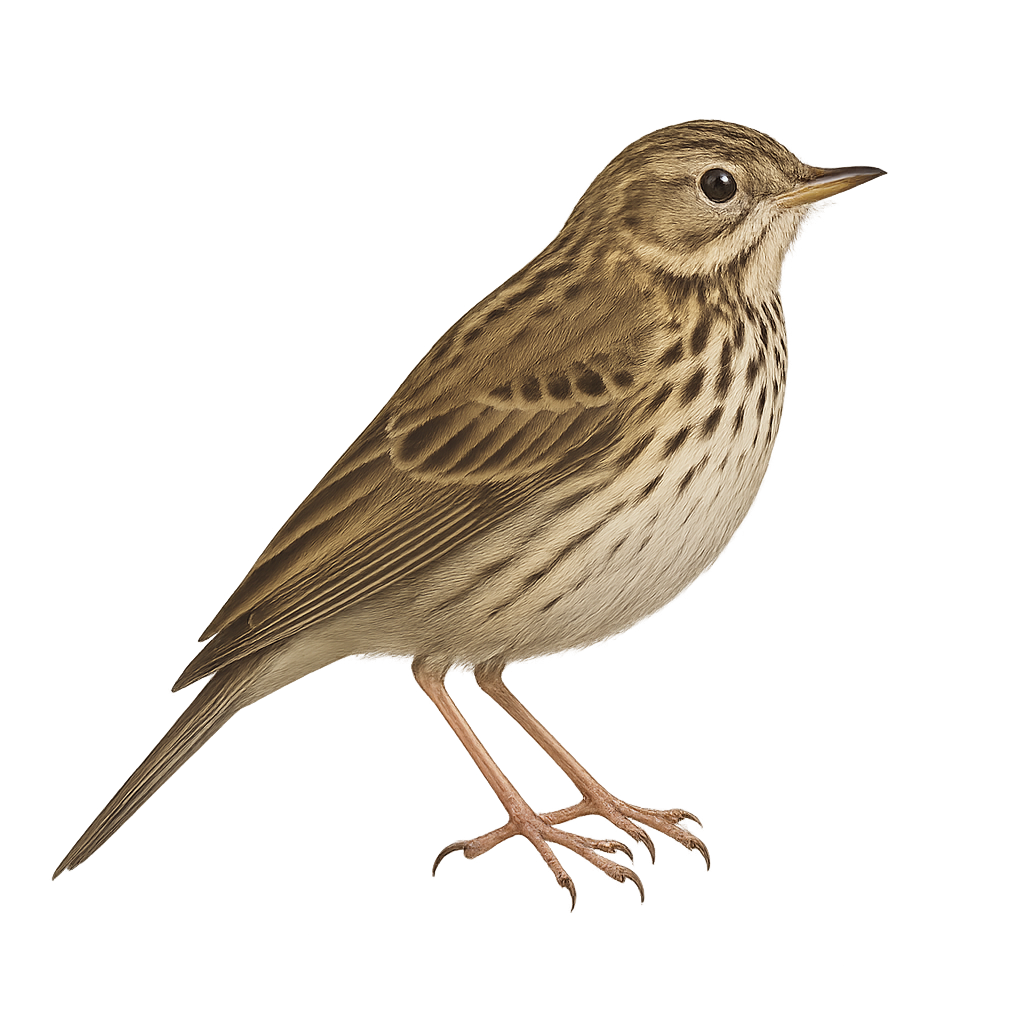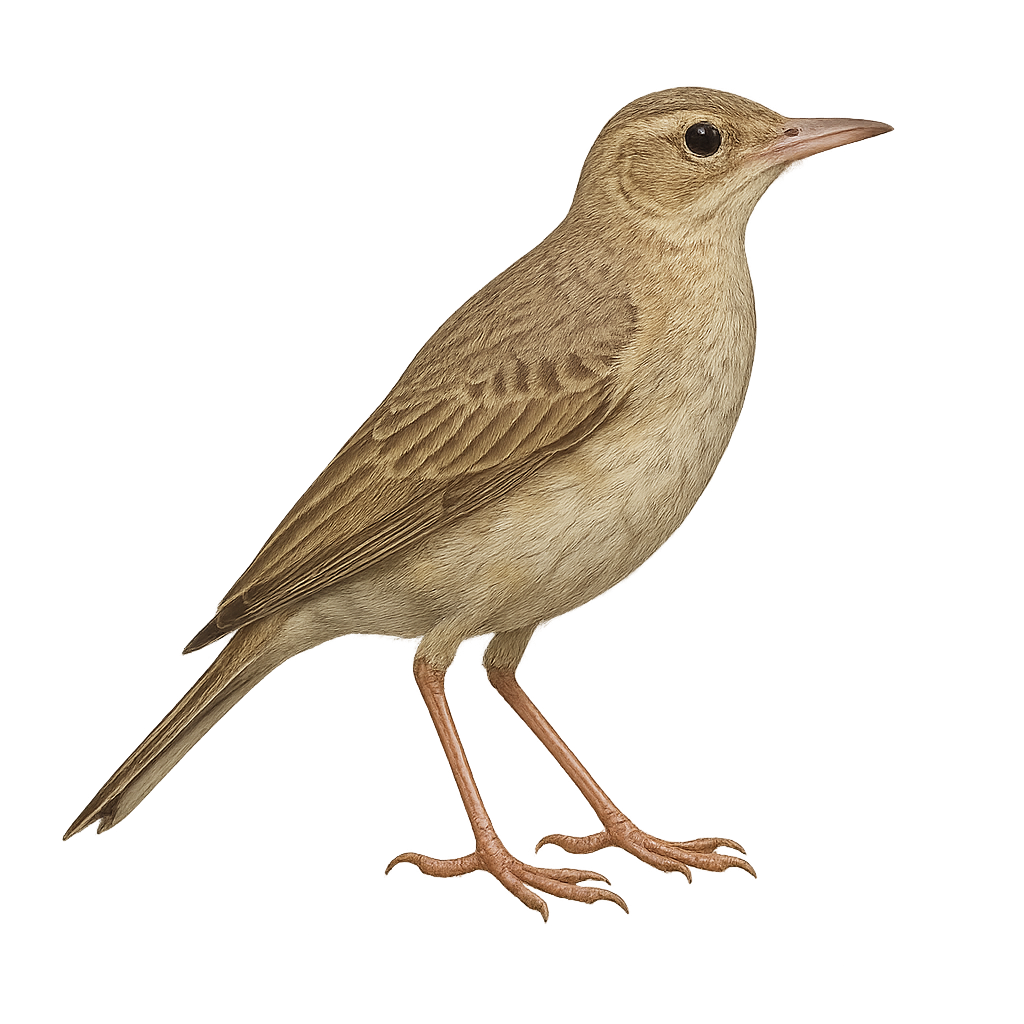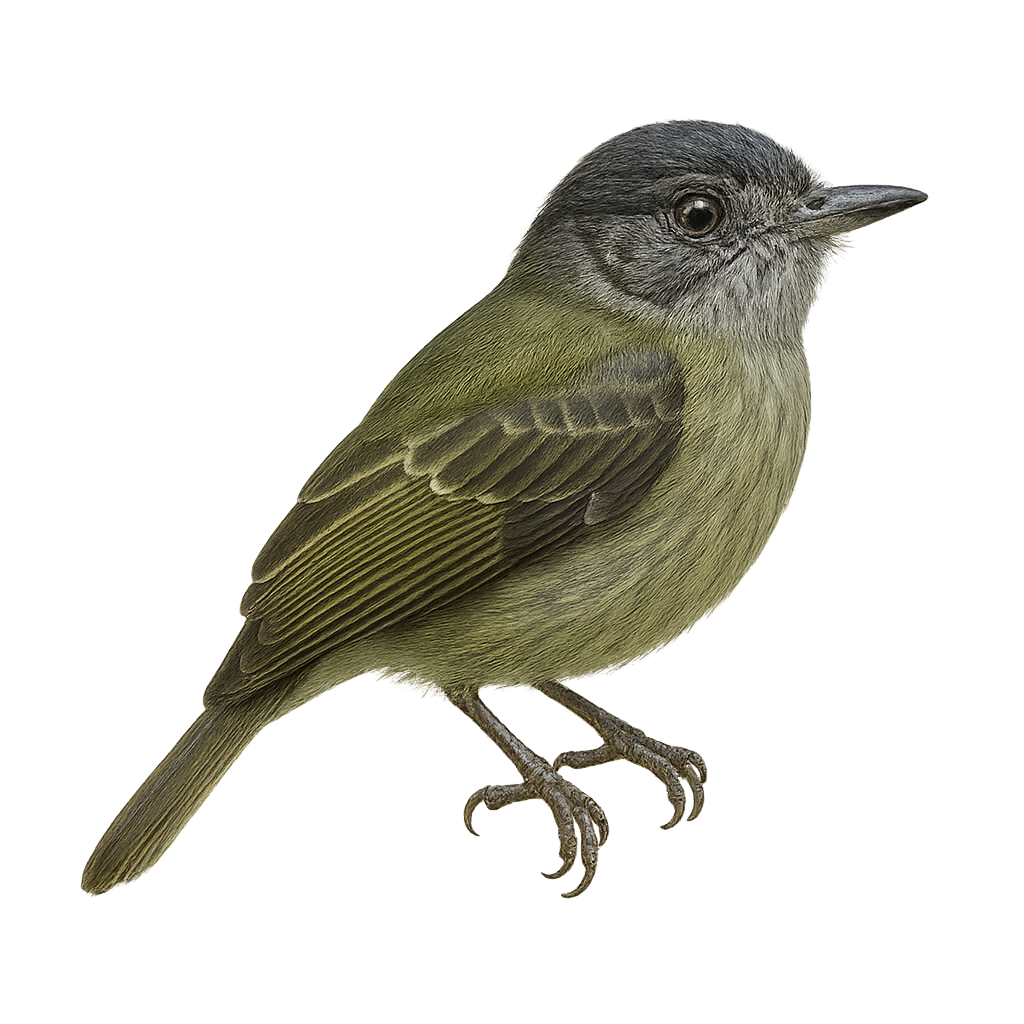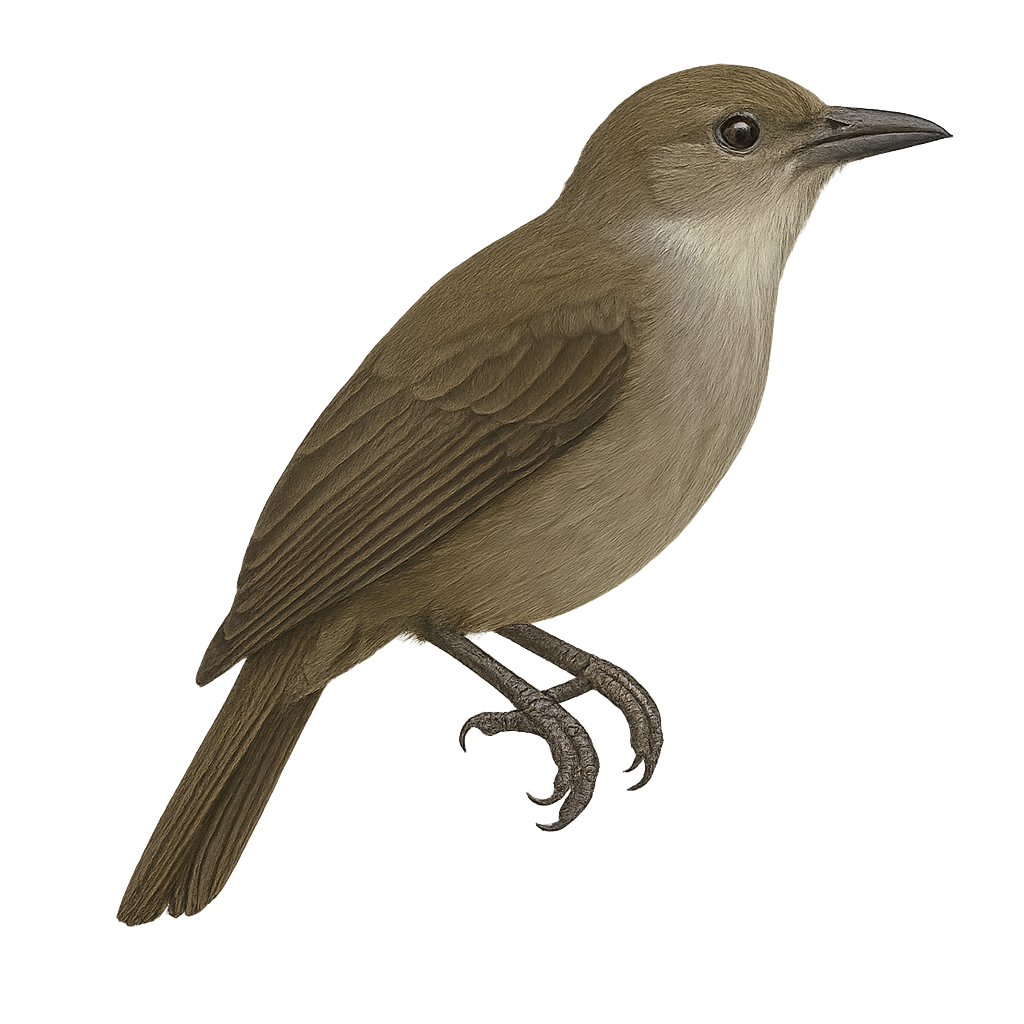The treecreeper is a small woodland bird found primarily in mixed forests, hedgerows, and gardens across Europe and Asia. It is easily recognized by its streaked brown plumage, light belly, and its distinctive movement as it climbs tree trunks and branches in a spiraling fashion. It primarily feeds on insects found in the cracks of tree bark.
The Thick-billed Murre, or Uria lomvia, is a robust seabird found in the cold waters of the Arctic and subarctic regions. It is identifiable by its distinctive black and white plumage, with a black back and white belly, as well as its thick, short bill. This bird is an excellent diver, capable of reaching impressive depths to catch fish and crustaceans, which make up the bulk of its diet. Breeding colonies are typically located on steep cliffs, where the birds nest in large groups to protect themselves from predators. Although currently listed as Least Concern by the IUCN, the Thick-billed Murre is vulnerable to climate change and marine pollution, which threaten its natural habitat.
The Tree Swallow, or Tachycineta bicolor, is a small migratory bird belonging to the Hirundinidae family. It is recognizable by its iridescent blue-green back and white belly. This bird is often observed in open areas near water, where it hunts flying insects. Tree Swallows are known for their aerial agility and ability to perform fast and acrobatic flights. They typically nest in natural or artificial cavities, and their breeding season extends from spring to summer. These birds are social and can often be seen in groups, especially during migration.
The Three-toed Jacamar is a fascinating bird, endemic to Brazil, distinguished by its bright plumage and long, slender beak. It primarily inhabits humid tropical forests and wooded areas, where it feeds mainly on flying insects. This bird is known for its ability to remain motionless for long periods, patiently waiting for its prey to come within reach. Although its habitat is limited, it adapts well to environmental changes, allowing it to survive in fragmented areas. Its population is currently stable, but deforestation continues to threaten its natural habitat.
The Tawny Fish Owl, or Ketupa flavipes, is a medium-sized nocturnal raptor known for its piercing eyes and golden-brown plumage. It primarily inhabits dense forests and wetlands in Southeast Asia. This owl is a skilled hunter, feeding mainly on fish and small mammals. It uses its powerful talons to capture prey with precision. Although primarily nocturnal, it can sometimes be seen at dusk. Its population is stable, but it remains vulnerable to deforestation and water pollution. The Tawny Fish Owl is a symbol of wisdom and mystery in many Asian cultures.
The Kiang is a large wild equid, closely related to the horse, primarily found in the high plateaus and mountains of the Himalayas and Tibet. It stands about 1.3 to 1.5 meters at the shoulder and weighs between 300 and 400 kg. Its coat is typically brownish-red or gray-brown with lighter shades on the belly and around the legs, and it has a short and sparse mane. The Kiang has a broad head and a bushy tail, similar to that of a horse. It primarily inhabits arid regions and high-altitude grasslands, feeding on grasses and woody plants. Highly social, the Kiang lives in large groups that move together in search of food. Unlike other wild equids, it is more tolerant of cold conditions and can survive at extremely high altitudes, up to 5,000 meters. While the species is relatively abundant in its range, it can be threatened by habitat loss due to climate change and human pressure, particularly from grazing and hunting.
The Tolai hare, Lepus tolai, is a medium-sized mammal known for its long ears and strong hind legs. It has a gray-brown coat that helps it blend into its natural habitat, which mainly consists of steppes, semi-deserts, and open grasslands. This hare is well adapted to arid climates and can be found in regions ranging from Central Asia to Mongolia. It is primarily nocturnal, allowing it to avoid the high daytime temperatures. Although generally solitary, it can be seen in small groups during the breeding season. Its ability to run quickly is its main defense against predators.
The Tufted Puffin, Fratercula cirrhata, is a striking seabird known for its contrasting black and white plumage and golden tufts during the breeding season. Found primarily in the North Pacific, it nests on steep cliffs of islands and rocky coasts. This puffin is distinguished by its broad, colorful bill, which becomes particularly vibrant during breeding. It feeds mainly on fish and small marine invertebrates, diving skillfully underwater to catch its prey. Although often solitary at sea, it gathers in dense colonies to nest. Its ability to fly swiftly and dive deeply makes it an efficient hunter.
The Torrent Duck, Merganetta armata, is a unique aquatic bird primarily found along mountain rivers in South America. This duck is distinguished by its exceptional adaptation to fast currents and turbulent waters. The male features a distinctive plumage with a white head striped with black, while the female displays more subdued shades of brown and gray. Their beak is thin and pointed, ideal for catching aquatic insects and larvae, their main food source. Torrent Ducks are often seen in pairs or small family groups, skillfully navigating rapids with their powerful legs and sharp claws. Their ability to dive and swim against the current is remarkable, making them specialists in their habitat.
The Turquoise-browed Motmot, scientifically known as Eumomota superciliosa, is a colorful and fascinating bird found primarily in Central America, from southern Mexico to Costa Rica. This beautiful bird is easily recognizable by its vibrant plumage, which combines shades of turquoise blue, green, and orange, as well as its long racket-shaped tail. The Turquoise-browed Motmot is often seen perched quietly on branches, characteristically swinging its tail. It primarily inhabits dry and humid tropical forests, forest edges, and open wooded areas. It feeds mainly on insects, small reptiles, and fruits. Although its conservation status is currently considered "least concern," deforestation and habitat loss pose potential threats to its populations.
The Tody Motmot, or Hylomanes momotula, is a discreet and fascinating bird belonging to the Momotidae family. It is mainly found in the humid tropical forests of Central America, where it blends skillfully into the dense foliage with its green and blue plumage. This small bird, measuring about 16 cm in length, is recognizable by its robust and slightly hooked beak, ideal for capturing insects and small invertebrates. The Tody Motmot is often seen alone or in pairs, perched silently waiting for its prey. Its discretion and shy behavior make it a challenge for ornithologists and photographers.
The Tristram's Storm Petrel is a discreet seabird belonging to the Hydrobatidae family. It is mainly observed in the North Pacific, particularly around the Hawaiian and Japanese islands. This small bird, measuring about 24 cm in length, is characterized by its dark plumage, often blackish with brownish hues. Its wings are long and narrow, adapted for agile flight over waves. The Tristram's Storm Petrel primarily feeds on small fish and crustaceans, which it captures at the surface. It nests in colonies on isolated islands, digging burrows to protect its eggs from predators. Although discreet, this bird plays a crucial role in the marine ecosystem, contributing to the regulation of its prey populations.
The Tundra Bean Goose, Anser serrirostris, is a medium-sized waterfowl belonging to the Anatidae family. It is characterized by its brown-grey plumage, orange legs, and a black bill with an orange band in the middle. This migratory bird frequents wetlands, marshes, and flooded meadows. During the breeding season, it nests mainly in Arctic and subarctic regions. In winter, it migrates to more temperate areas, often in large flocks. The Tundra Bean Goose is a gregarious bird, forming noisy and active groups. It primarily feeds on aquatic plants, seeds, and roots, which it finds by probing in the mud or grazing in fields.
The Tapanuli orangutan is a recently discovered primate species, considered one of the rarest and most endangered in the world. It measures about 1.2 meters in height and weighs between 30 and 60 kg. This ape has a shiny reddish coat, with long arms adapted to its life in the trees. Native to the mountains of the Tapanuli region in northern Sumatra, Indonesia, this orangutan primarily inhabits montane tropical forests. It feeds mainly on fruits, leaves, and bark. The Tapanuli orangutan is a solitary and secretive animal and is considered critically endangered due to deforestation, mining, human conflict, and forest fires.
The Thick-billed Euphonia is a small, colorful bird belonging to the Fringillidae family. It is primarily found in the tropical and subtropical forests of Central and South America. This bird is distinguished by its vibrant plumage, featuring shades of blue, yellow, and green. The male displays more brilliant colors compared to the female, which is generally duller. The Thick-billed Euphonia is known for its robust beak, adapted to its diet mainly consisting of fruits and berries. It plays a crucial role in seed dispersal, thus contributing to forest regeneration. Its melodious song is often heard at dawn and dusk, adding a harmonious touch to its natural habitat.
The tree pangolin, or Manis tricuspis, is a medium-sized, nocturnal insectivorous mammal found in the tropical forests of Central and West Africa. It is easily recognizable by its protective scales made of keratin, the same substance as human nails. This pangolin is an agile climber, using its prehensile tail to navigate trees in search of ants and termites, its primary food source. Unfortunately, it is threatened by poaching for its meat and scales, which are highly valued in traditional medicine. Conservation efforts are crucial to maintaining the ecological balance of its natural habitat.
The Trumpet Manucode, scientifically known as Phonygammus keraudrenii, is a captivating bird from the Paradisaeidae family. It inhabits the tropical rainforests of New Guinea and nearby islands. This bird is notable for its glossy black plumage with metallic sheen and its distinctive trumpet-like call, which gives it its name. The Trumpet Manucode is a medium-sized bird, measuring about 42 cm in length. It primarily feeds on fruits and insects found in the forest canopy. Although its habitat is relatively stable, deforestation poses a potential threat to its population.
The Tropical Parula, or Setophaga pitiayumi, is a small, brightly colored songbird, primarily blue-gray with a bright yellow belly and a white throat. It is found in the tropical and subtropical forests of Central and South America, where it primarily feeds on insects. Often seen actively moving through foliage in search of food, it is easily recognizable by its melodious song. This species is generally solitary or found in small family groups and is known for its adaptability to various habitats, including secondary forests and degraded wooded areas.
The Townsend's Warbler is a small songbird belonging to the Parulidae family. It is primarily recognized by its distinctive plumage: an olive-green back, bright yellow breast, and black streaks on the head. Males display more pronounced patterns than females. This species is mainly found in the coniferous forests of western North America, where it feeds on insects and spiders. Migratory, it winters in the southern United States and Central America. The Townsend's Warbler is known for its melodious song, composed of clear and repetitive notes. Although its habitat is threatened by deforestation, it is currently classified as a species of least concern by the IUCN.
The Trinidad Piping Guan, or Pipile pipile, is a rare and endemic bird of Trinidad Island. This large bird, part of the Cracidae family, is recognizable by its glossy black plumage, distinctive white throat, and long red legs. It primarily inhabits the island's tropical rainforests and wooded areas. This bird is mainly frugivorous, feeding on fruits, seeds, and occasionally insects. Unfortunately, the Trinidad Piping Guan is threatened by habitat loss and hunting. It is classified as vulnerable by the IUCN. Its conservation is crucial to maintaining Trinidad's unique biodiversity.
The Tropical Screech Owl, or Megascops choliba, is a small nocturnal bird of prey belonging to the Strigidae family. It is widely distributed across Central and South America, inhabiting various forest types, from wooded areas to the edges of tropical forests. This owl is characterized by its modest size, measuring about 23 to 25 cm in length, and its cryptic plumage that allows it to blend into its surroundings. Its plumage is generally grayish-brown with streaked patterns, providing excellent camouflage. The Tropical Screech Owl is primarily nocturnal, feeding on small insects, rodents, and occasionally small birds. Its call is a soft, repetitive trill, often heard at dusk and during the night.
The Tiger-striped Leaf Frog, scientifically known as Phyllomedusa tomopterna, is a medium-sized arboreal frog native to the tropical rainforests of South America. It is characterized by its green skin with white spots and prominent eyes. This nocturnal species primarily feeds on insects. Its adhesive toe pads allow it to climb leaves and branches with ease. The Tiger-striped Leaf Frog plays a crucial role in the ecosystem by controlling insect populations. Although it is relatively tolerant of human disturbances, deforestation poses a threat to its natural habitat.
The Great Spotted Woodpecker is an iconic bird of forests in Europe, Asia, and North Africa. It measures about 25 to 30 cm in length, with a wingspan of 40 to 45 cm, and weighs between 70 and 100 g. It is easily recognizable by its black and white plumage, with a red head in males and a red patch on the nape in females. The Great Spotted Woodpecker is an excellent climber, using its strong beak to tap on tree trunks in search of insects, primarily insect larvae and ants, which it extracts with its long, sticky tongue. It is often seen hammering wood in search of food or to mark its territory. The Great Spotted Woodpecker is found in a variety of forests, from broadleaf to mixed forests, and although its population remains stable, it is sometimes affected by habitat loss.
The tree pipit is a small passerine about 15 cm long with streaked brown upperparts and a pale breast. It inhabits woodland edges, open woodlands and hedgerows, feeding mainly on insects and seeds. During breeding, males sing in flight and from low perches to attract mates and defend territory.
The tawny pipit is a small passerine of 16–17 cm with finely streaked sandy plumage and a pale breast. It inhabits open steppe, dry fallow land and garrigue, feeding mainly on insects and seeds picked from the ground. During breeding, males perform singing flights and sing from low perches to attract females and defend their territory.
The Leptopogon taczanowskii, or Taczanowski's Tyrannulet, is a small bird from the Tyrannidae family. It is primarily found in the humid forests of the Andes, where it moves nimbly through dense vegetation. Its plumage is mainly olive green with lighter shades on the belly, allowing it to blend into its surroundings. This bird is known for its distinctive song, often heard before seen. It feeds mainly on insects, which it catches in flight or finds on leaves. Taczanowski's Tyrannulet is a discreet bird, often difficult to observe due to its wary behavior and dense habitat.
The Thick-billed Berrypecker is a medium-sized bird endemic to the tropical forests of New Guinea. It is characterized by its thick and robust beak, adapted to its diet mainly consisting of berries and fruits. Its plumage is generally dark, with shades of olive green and brown, allowing it to blend into its dense forest habitat. This bird is often observed in small groups or pairs, actively moving through the canopy in search of food. Although little studied, it likely plays an important role in seed dispersal, thus contributing to the regeneration of its ecosystem. Its population is currently stable, but deforestation could pose a future threat.
The Traylor's Flycatcher, or Tolmomyias traylori, is a small passerine bird in the Tyrannidae family. It is primarily found in the humid forests and edges of the Amazon region. This bird is characterized by its olive-green plumage and pale yellow belly, with a head often marked by a darker cap. Known for its melodious song and distinctive calls, the Traylor's Flycatcher feeds mainly on insects, which it catches in flight or on leaves. It is often seen in small groups or pairs, actively moving through the canopy in search of food. Although its habitat is threatened by deforestation, the species is currently listed as of least concern by the IUCN.
The Tawny-throated Dotterel is a medium-sized bird known for its distinctive tawny throat and collar. It primarily inhabits open grasslands and wetlands in South America, especially in Argentina, Chile, and Uruguay. Often seen in small groups, this bird feeds on insects and small invertebrates. Its ability to blend into its surroundings can make it difficult to spot. Although primarily terrestrial, it can fly short distances to escape predators. The breeding season varies by region but is generally influenced by local climatic conditions.
The Tawny Frogmouth, Podargus strigoides, is a nocturnal bird native to Australia, often mistaken for an owl due to its appearance. It has grey-brown plumage that allows it to blend seamlessly into tree bark. Its wide, flat beak is adapted for catching insects and small vertebrates. Unlike owls, its eyes are forward-facing, providing binocular vision. Primarily active at night, it spends its days motionless, camouflaged against tree trunks. The Tawny Frogmouth is monogamous, forming long-lasting pairs. It plays an important ecological role in controlling insect populations.


